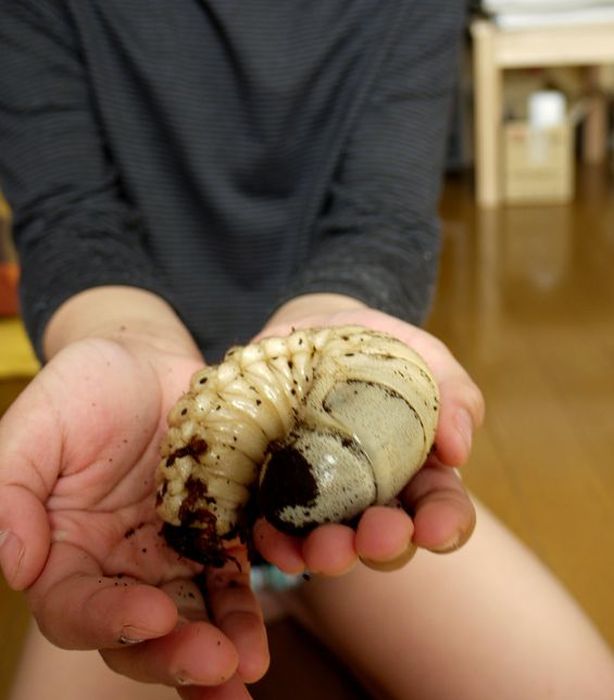|
|
The Life Of A Hercules Beetle
|
The Hercules beetle, Dynastes hercules, is the most famous and largest of the rhinoceros beetles. It is native to the rainforests of Central America, South America, and the Lesser Antilles (Clemson University). The beetle has also been observed as far north as Chiapas state, Mexico. Their title is well deserved, with some (exceptionally rare) males reaching 6.75 inches (170 mm) in length. It is the largest of the 6 species in the Dynastes genus, and one of the largest beetles known, being exceeded in length by only two other beetles in the family Cerambycidae, Macrodontia cervicornis (specimens of 170–175 mm are known) and Titanus giganteus (also up to 170–175 mm; several 180+ mm specimens are reputed/alleged to exist). However, if the horns are excluded, both Macrodontia Cervicornis and Dynastes Hercules drop considerably farther down in the size rankings, leaving the titan beetle on top. One reason for this is that the development of the horns is allometric, as well as sexually dimorphic, and thus not strictly correlated to actual body size; it is possible for a female to be much longer, measured from eyes to abdomen, than a male, yet be considered "smaller" simply due to the absence of horns.The Hercules beetles picks up the foe with his horns during fights, flies and slams it down, breaking the foe's head.
This scarab beetle is most noted for its thoracic and cephalic horns, which can grow longer than the body of the beetle itself. This adaptation is primarily used during fights with other males. Features of this species are the numerous small black spots on the elytra and the thick hairs on the underside of the thoracic horn.
The Hercules beetle is said to be the strongest creature on earth for its size, able to carry 850 times its own body weight.
Hercules beetles are highly sexually dimorphic, with the females generally being larger-bodied but much shorter, as they lack horns entirely. The larval stage of the Hercules beetle will last one to two years, with the larva growing up to 4.5 inches (110 mm) in length and weighing up to 120 grams. Much of the life of the larva is spent tunneling through its primary food source of rotting wood. After the larval period, transformation into a pupa, and molting, the beetle then emerges as an adult. Adults will roam the forest floor in search of decaying fruit.
|
|









